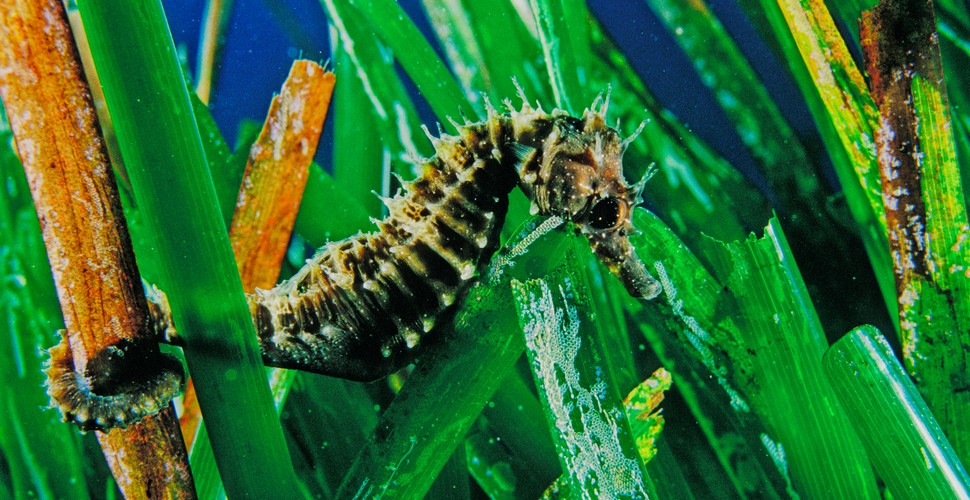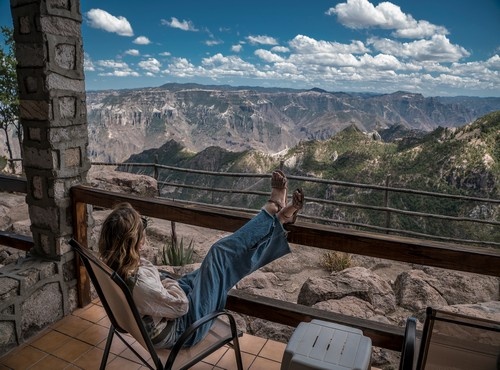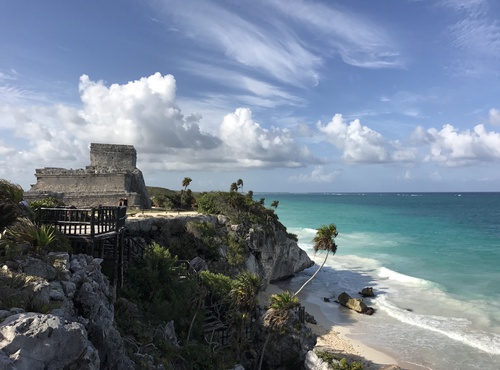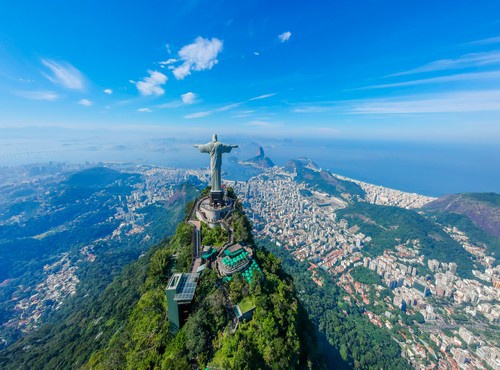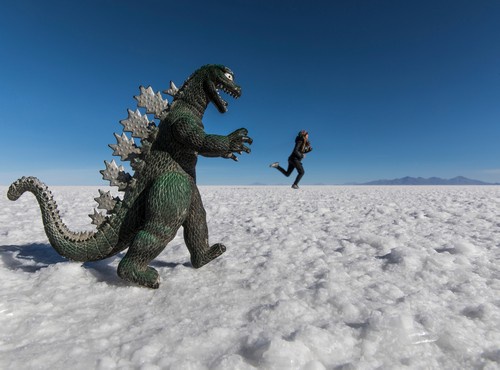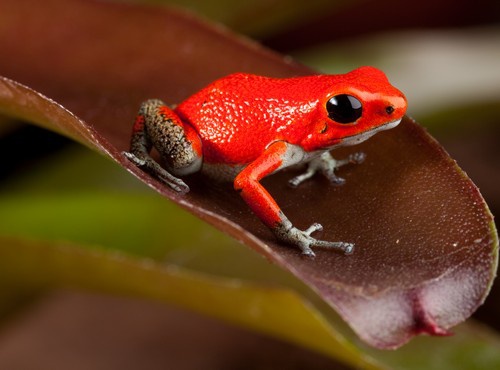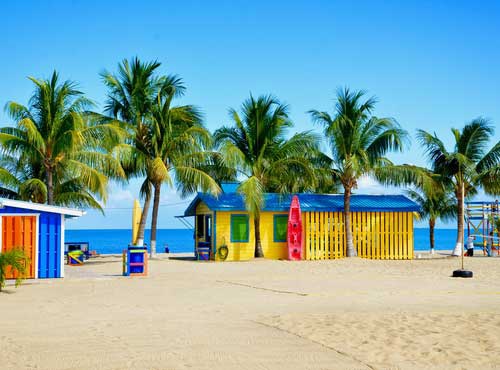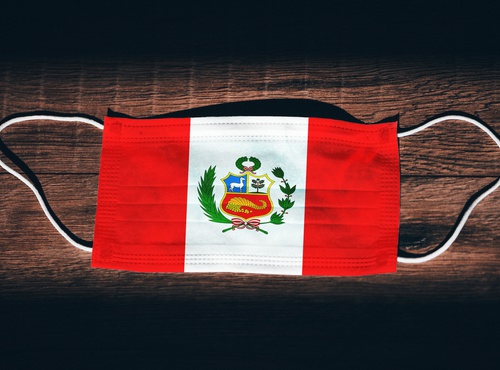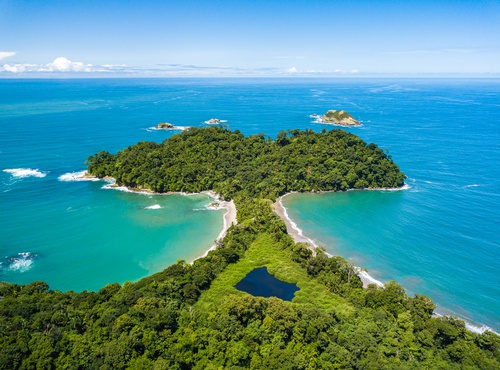
Written by:undefined undefined
Published: 14-02-2022
Panama’s Caribbean coast, is home to a number of different ecosystems including lowland tropical rainforest and coral reefs. This incredible region boasts an array of different species to look out for on a trip to the Caribbean coast of Panama or the archipelago of Bocas del Toro. The unique range of habitats offers impressive biodiversity, from different coloured frog species, the largest sea turtle in the world and even mammals that are found nowhere else in the world. This is just the tip of the iceberg of animal encounters on a visit to this remarkable region of Panama. Here are some of the animals you will hopefully get to know in the country.
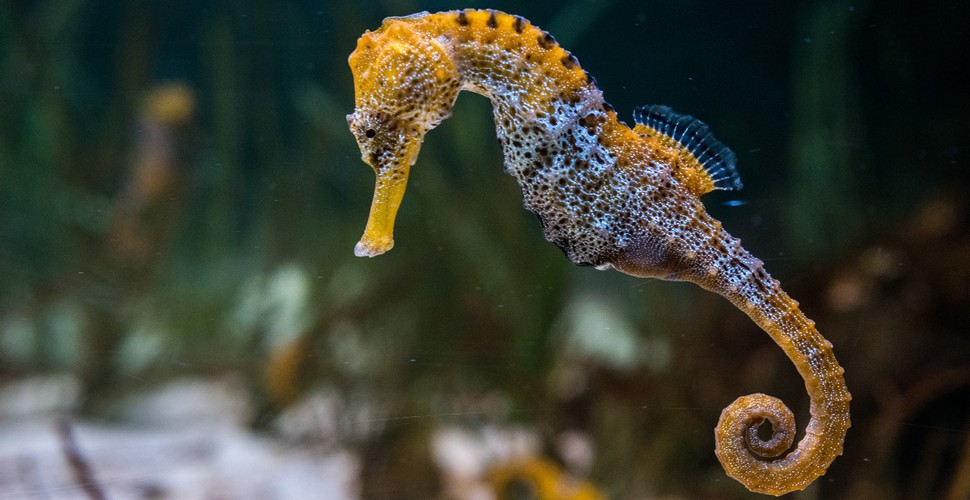
Long snouted seahorse
Panamanian night monkey
The Panamanian night monkey is a tiny, elusive primate that as the name suggests, is usually only active at night. During the day, families of these monkeys sleep in their ‘roosting tree.’ With a nature guide, you will be able to see the monkeys sleeping while on a walk through the rainforests near Bocas del Toro.
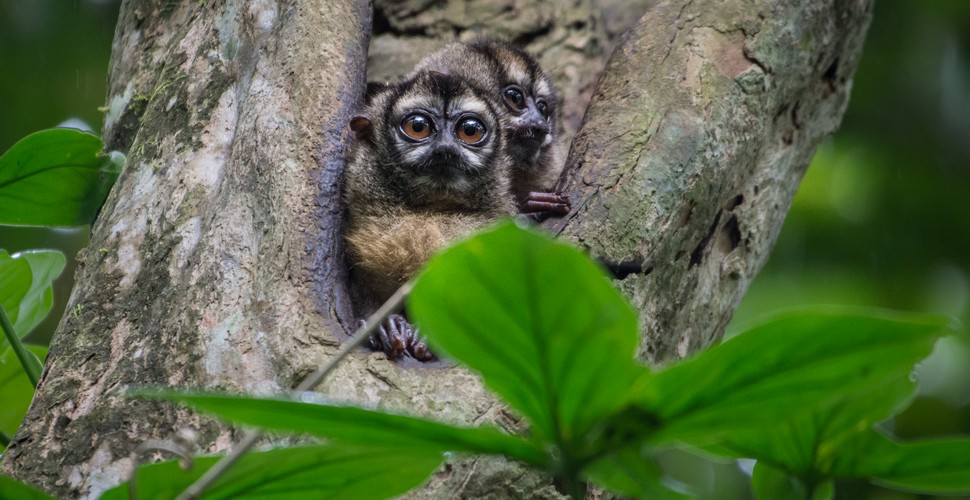
Panamanian night monkey
Pygmy three-toed sloth
The pygmy three-toed sloth wasn’t recognized as a separate species until 2001. Endemic to Isla Escudo de Veraguas, an isolated mangrove island, this slow-moving mammal is almost identical to its cousin, the more commonly seen brown three-toed sloth, but is a lot smaller in size. This island is now home to the world’s entire population of pygmy three-toed sloths, which are an extremely endangered species. Life on this remote mangrove island, which is interlaced with channels of water, has allowed the evolution of these sloths to become excellent swimmers.
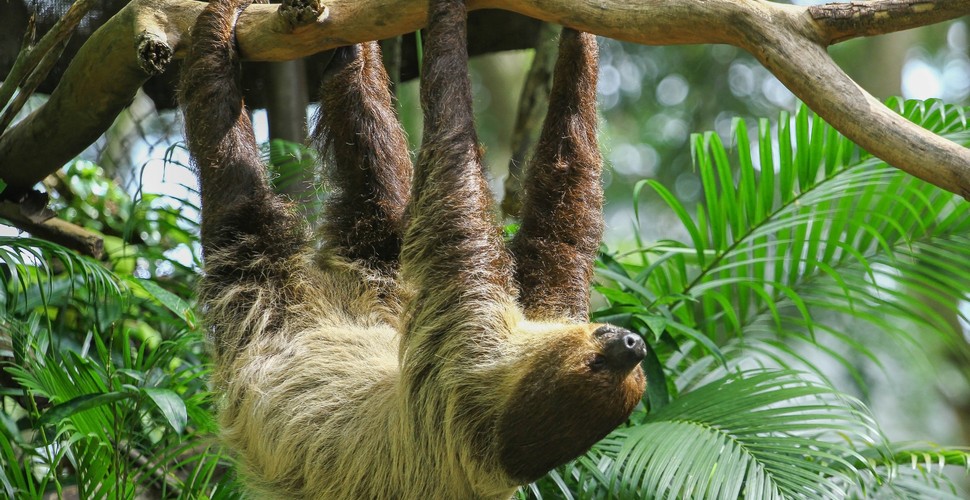
pygmy three-toed sloth
Central American woolly opossum
Unlike their North American cousin, Central American woolly opossums are super cute. These medium-sized tropical marsupials roam the forests at night, looking for fruit, insects and nectar to eat. As such, they play an essential role in dispersing seeds through the forests. Similar to kangaroos, baby woolly opossums are called joeys and depend on their mother’s protective pouch during their developmental stage of life. Similar to other sloth species, their favourite tree is the cecropia.
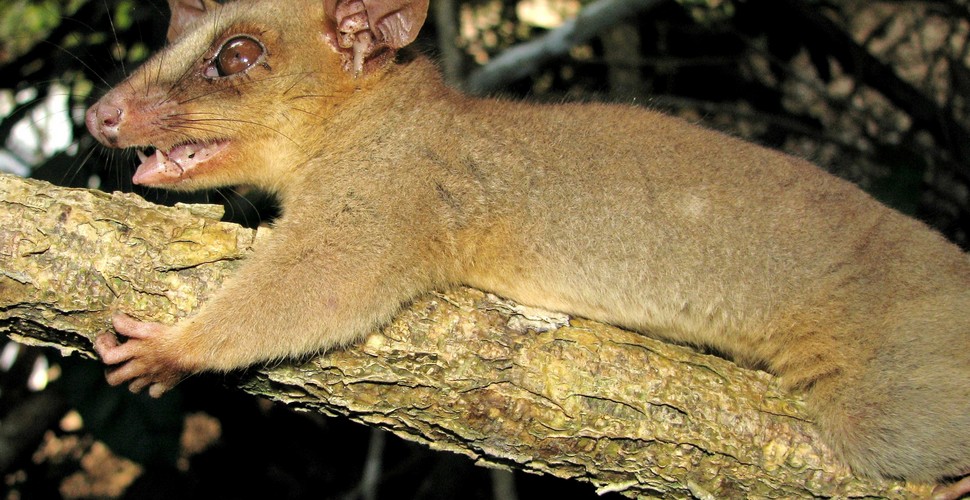
Central American woolly opossum
Strawberry poison frog
The strawberry poison frog, is found throughout the rainforests on the Caribbean side of Panama. These tiny toxic frogs are usually bright red with dark blue legs, however, in Bocas del Toro, this frog species displays a spectacular array of colour variations that differ from island to island in the archipelago. Some frogs are completely red; red with black spots; green with black spots; orange with black spots; yellow with black spots and even totally green coloured. Even though they belong to the same species, frogs of a certain colour combination will only mate with other frogs of the same colour. If you keep your eyes peeled, you can spot these vivid amphibians in leaf litter and around the base of trees in the rainforest.
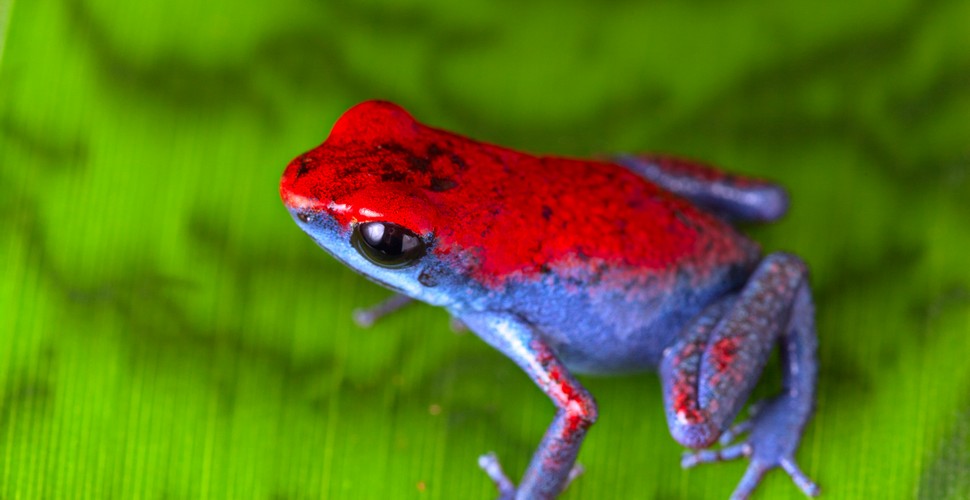
strawberry poison frog
Red-headed dwarf gecko
The red-headed dwarf gecko is a tiny, harmless lizard that sometimes likes to live in human houses. They are another vividly coloured amphibian and are nocturnal feeders. Unlike the common house gecko, which is more muted in colour, the red-headed dwarf gecko has a striking, electric blue body with tiny black spots. Like all geckos, they are attracted to lights at night, since the lights attract their food source of smaller insects.
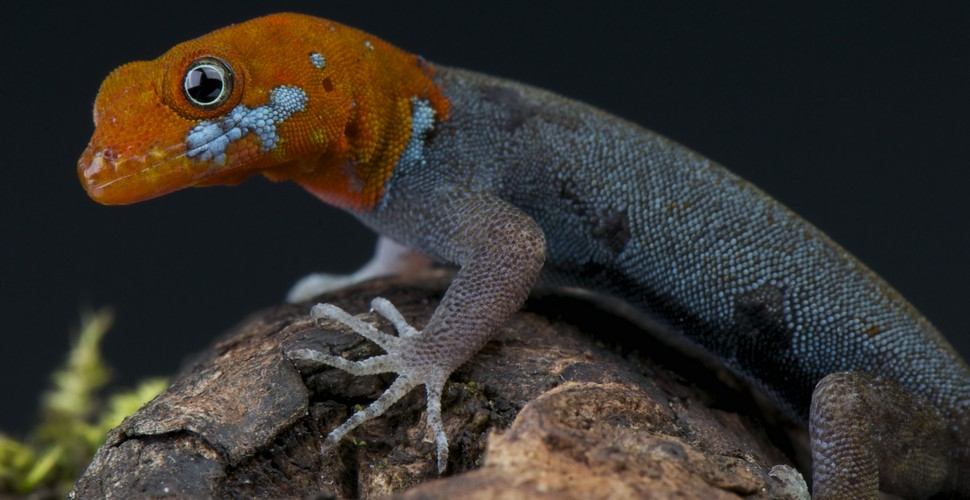
red-headed dwarf gecko
Leatherback sea turtle
The leatherback sea turtle is the largest and most endangered sea turtle in the world. This massive reptile can grow up to 2.15m long and weigh 907kg. From mid-February through mid-July, egg-carrying leatherback sea turtles dig their nests on several beaches along the Caribbean coast. Playa Bluff on the island of Isla Colon is one of the best places to spot these sea creatures.
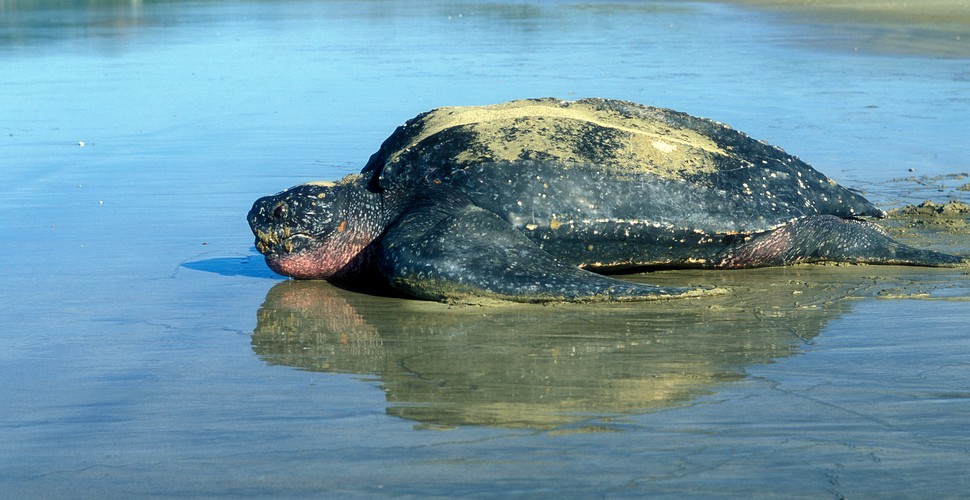
leatherback sea turtle
Montezuma Oropendola
The birdsong of the Montezuma Oropendola is synonymous with Panama´s Caribbean coast. This very vocal and charismatic bird has a wide range of calls, but once you’ve heard it sing, you’ll never mistake it for any other bird. They can be seen hopping from branch to branch high up in the trees, making it somewhat difficult to capture in a photo, but is worth the effort. Oropendolas also build their nests in a specific way that look like a pendulum or cornucopia. In some rainforests, you can see dozens of oropendola nests hanging from a single palm tree.
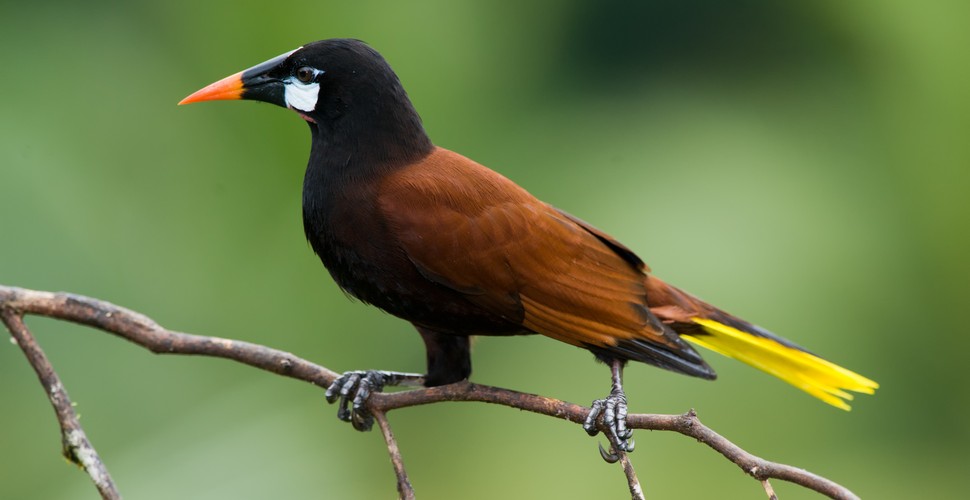
Montezuma Oropendola
Keel-billed toucan
Keel-billed toucans are very shy and rarely sit still for very long. But when they do make an appearance, these gorgeous birds are certainly a sight to behold. Their large rainbow-coloured beaks are mainly used to eat fruit, but occasionally they also snack on insects, lizards and tree frogs. keel-billed toucans were widely caught and circulated through the illegal pet trade, but luckily for them it was gradually discovered that they have rather poor dispositions and don´t make the best pets. While they are not currently an endangered species, their rainforest habitat continues to be destroyed in Central and South America, which could mean that they will appear on the list very soon.
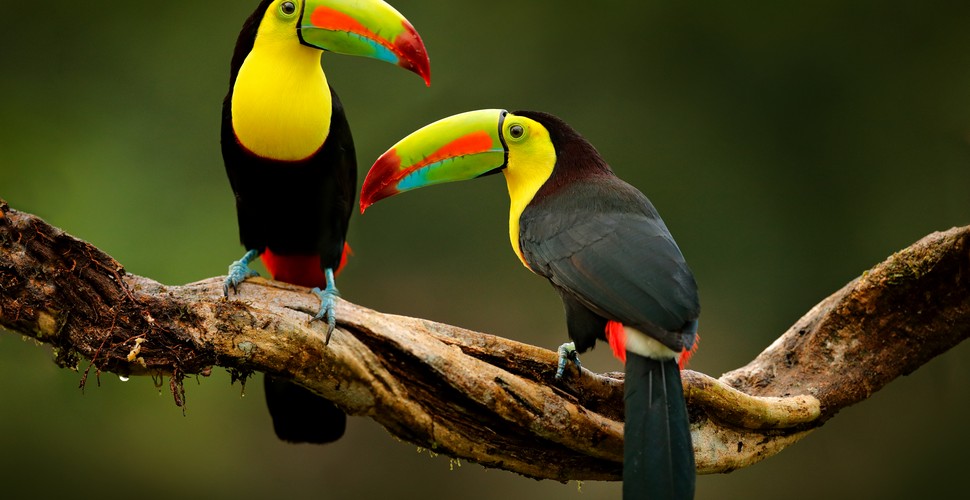
Keel-billed toucans
Spectacled caiman
Spectacled caimans are relatively small in comparison to their relatives, the American crocodile, which can also be found in Panama. These caimans whose name comes from the ridge between their eyes, prefer calm freshwater but can tolerate a certain level of sea water. One place where you are almost guaranteed see at least one caiman is on the walk to Bocas del Toro’s renowned Red Frog beach.
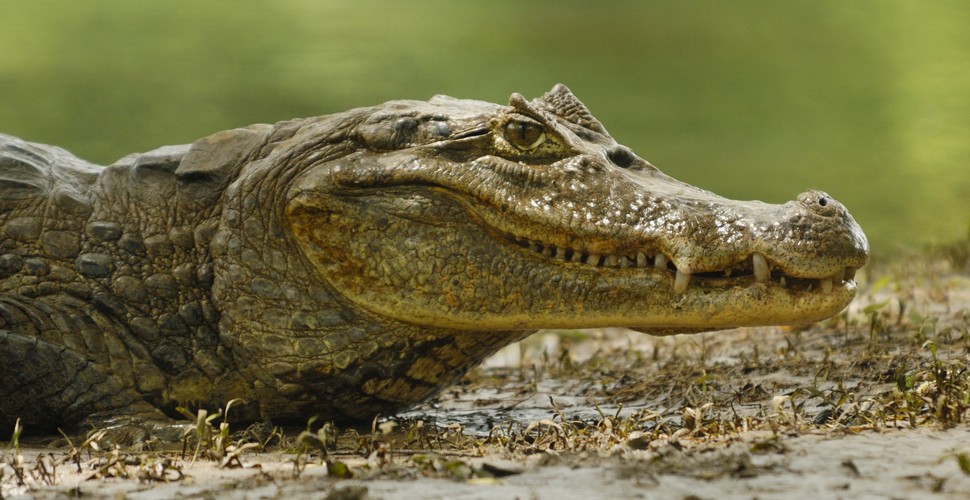
Spectacled caiman
Three-wattled bellbird
For birders, the three-wattled bellbird is a highly prized bird to spot. This brown and white bird has three distinct wattles hanging down from its face. It also has a unique three-part call that ends in a bonk-like sound. The three-wattled bellbirds are seasonal visitors of Bocas del Toro, but their song is spectacular if you get the chance to hear it. The last part of the three-part call is said to be one of the loudest bird calls on the planet.
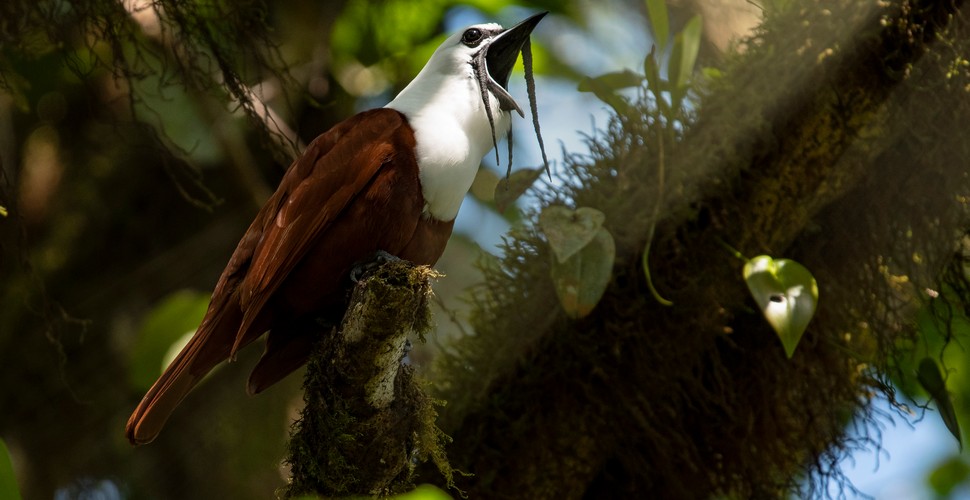
Three-wattled bellbird
Long snouted seahorse
